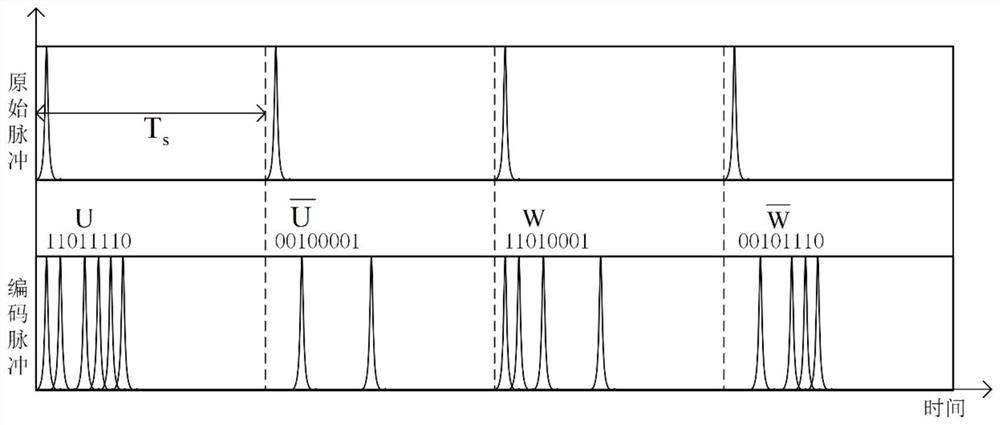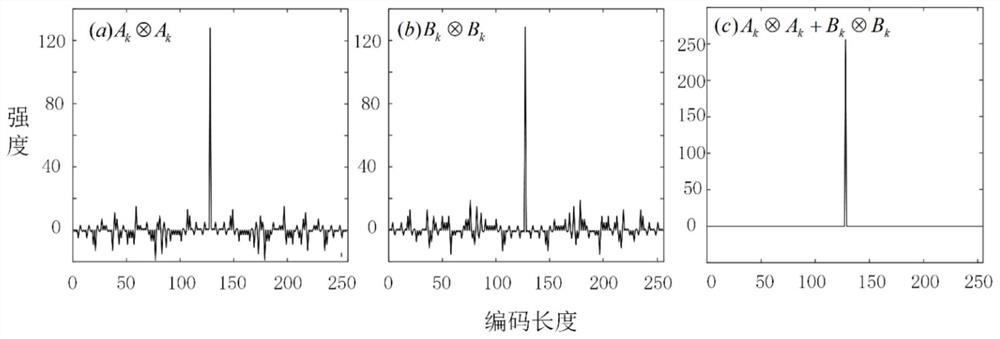1.5μm wavelength aerosol detection lidar and signal decoding method based on pulse coding
A technology of pulse coding and detection of laser light
- Summary
- Abstract
- Description
- Claims
- Application Information
AI Technical Summary
Problems solved by technology
Method used
Image
Examples
Embodiment
[0022] see figure 1 A 1.5μm wavelength aerosol detection laser radar based on pulse coding technology disclosed in the present invention is shown. The purpose of the present invention is to achieve through the following technical solutions, including: a seed laser 1, a first electro-optic modulator 2, a second electro-optic modulator 3, fiber amplifier 4, beam splitter 5, collimator 6, receiving telescope 7, filter 8, indium gallium arsenide quantum detector 9, energy monitoring channel 10, acquisition card 11, computer 12, waveform generator 13; in:
[0023] The output end of the seed laser 1, the first electro-optic modulator 2, the second electro-optic modulator 3, the fiber amplifier 4 and the input end of the beam splitter 5, the output end and the input end of the collimator 6 are sequentially connected; The output end of the receiving telescope 7, the filter 8, the indium gallium arsenide quantum detector 9, the acquisition card 11, the input ends and output ends of th...
specific Embodiment 1
[0048] Specific embodiment 1, for the horizontal detection of aerosols or pollutants, it can effectively improve the radar detection distance, improve the signal-to-noise ratio, and further improve the accuracy of pollutant traceability.
specific Embodiment 2
[0049] The specific embodiment 2 is used for vertical detection of aerosols or clouds, which can improve the radar detection height, improve the signal-to-noise ratio, and improve the cloud penetration ability.
[0050] The 1.5 μm aerosol detection lidar based on the pulse coding technology provided by the embodiment of the present invention has the following beneficial effects:
[0051] 1) The pulse train composed of the Golay complementary sequence is pulse encoded to reduce the time-domain cross-correlation between the transmitted waveforms, and the complementary nature of the Golay complementary sequence is used to reduce the side lobes of the autocorrelation and reduce the side lobes after the waveform pulse is compressed.
[0052] 2) Using the Golay coded pulse as the detection pulse of the lidar solves the problem of limited peak power of the fiber laser pulse, significantly improves the signal-to-noise ratio of the lidar, effectively improves the detection distance, and...
PUM
 Login to View More
Login to View More Abstract
Description
Claims
Application Information
 Login to View More
Login to View More - R&D
- Intellectual Property
- Life Sciences
- Materials
- Tech Scout
- Unparalleled Data Quality
- Higher Quality Content
- 60% Fewer Hallucinations
Browse by: Latest US Patents, China's latest patents, Technical Efficacy Thesaurus, Application Domain, Technology Topic, Popular Technical Reports.
© 2025 PatSnap. All rights reserved.Legal|Privacy policy|Modern Slavery Act Transparency Statement|Sitemap|About US| Contact US: help@patsnap.com



